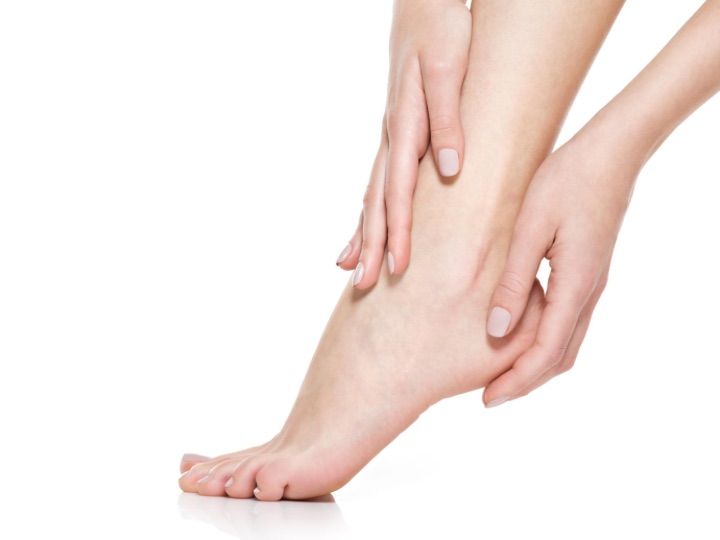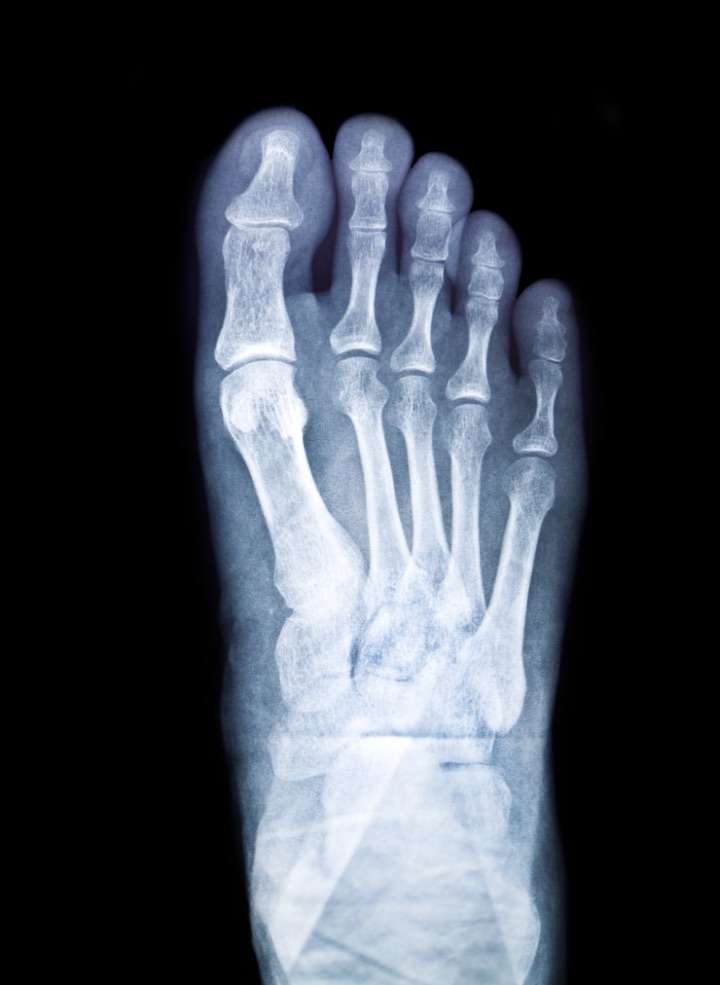Morton’s neuroma occurs when a nerve between the toes becomes irritated or compressed, causing symptoms like burning sensations and tingling.
Morton’s Neuroma is a painful foot condition caused by an enlarged nerve in the ball of the foot. It usually occurs between the third and fourth toes, where it can be felt as a lump or bump on the sole.
The pain from this condition can vary from mild discomfort to severe burning and shooting pain. It often gets worse when wearing shoes, walking, or even standing for long periods of time.
The cause of Morton’s neuroma is not entirely understood, but experts believe it may be due to irritation, compression, or injury to the nerve in your foot.
Treatment for Morton’s neuroma typically includes rest, over-the-counter medications such as ibuprofen for pain relief, orthotic devices to change how much pressure is put on your feet, and corticosteroid injections if other treatments don’t work.
Surgery may sometimes be recommended as a last resort if all other treatment methods fail.
Morton’s neuroma is a painful condition that develops when the nerve between the toes becomes compressed and irritated. It is caused by compression injury, pressure from footwear, and nerve irritation due to repetitive activities.

Photo Credit: Freepik
These activities can include running or walking for long periods of time, wearing tight shoes, or having a high arch in your foot.
Compression injury is one of the main causes of Morton’s neuroma. This type of injury occurs when too much pressure is placed on a nerve, usually in the foot, for an extended period of time. Tight-fitting shoes and activities that require repetitive motions are common causes of compression injuries.
The pressure gradually builds up over time until it eventually irritates the nerve enough to cause swelling, inflammation, and pain. In some cases, a person may not even realise they are suffering from a compression injury until they experience symptoms such as burning or prickly sensations in their feet, numbness, or tingling.
Left untreated, these symptoms can worsen and become excruciatingly painful. To treat a compression injury related to Morton’s Neuroma, doctors will often recommend cushioning insoles to help reduce pressure on the affected area and physical therapy exercises to stretch and strengthen muscles in the foot.
Wearing the wrong shoes can put too much pressure on your feet, leading to a painful compression injury. This is one of the most common causes of Morton’s neuroma, which is a condition that affects the nerves in between your toes.
Footwear pressure can cause this painful condition if:
It’s important to wear comfortable shoes that provide good support for your feet and don’t pinch them in any way. Shoes should extend at least a half inch beyond your longest toe for proper fit and cushioning and should be wide enough so you don’t feel cramped or uncomfortable when wearing them for extended periods of time.

Photo Credit: Freepik
Change up your footwear occasionally to give your feet some rest from constantly being crunched into an unnatural position due to ill-fitting shoes. Try buying insoles or inserts designed specifically for Morton’s neuroma if you experience frequent pain when wearing certain types of shoes.
Nerve irritation can be a result of compression injuries caused by ill-fitting footwear. This type of injury is common in Morton’s neuroma, a condition that affects the nerve between the third and fourth toes. When this nerve gets compressed or irritated, it can cause pain, burning sensations, and tingling in the ball of your foot.
Other symptoms include feeling like you’re standing on a pebble or lump in your shoe. Sometimes, there may be numbness and shooting pains in your toes or up your leg.
To help prevent these injuries, it’s important to wear shoes with good cushioning and support that fit properly. If you already have Morton’s neuroma symptoms, don’t wait for them to get worse – see your doctor for treatment options such as orthotics, physical therapy, and anti-inflammatory medications.
If you’re experiencing a painful discomfort, foot numbness, and burning sensation in the ball of your foot, you may have Morton’s Neuroma. This condition is caused by thickening the tissue around one of the nerves leading to your toes and can be quite uncomfortable.
Numbness and burning sensations are common symptoms of this condition along with pain that radiates through your foot when walking or standing for long periods of time.
You may experience a painful discomfort in the ball of your foot. This can range from burning to numbness, often including sharp or shooting pain. Sometimes, it may feel like you are standing on a pebble or walking with a sock bunched up beneath the affected area.

Photo Credit: valuavitaly
Here are 3 ways this pain can manifest:
The discomfort is usually felt between the third and fourth toes when Morton’s neuroma is present, but it can spread to other parts of the foot depending on its severity. It usually intensifies when wearing shoes or engaging in physical activity like running or jumping.
Many people relieve symptoms by soaking their feet in warm water or massaging them gently with lotion or oil.
Foot numbness is a common symptom of various medical conditions and can range from mild to severe. Morton’s neuroma, a condition affecting the nerve between your third and fourth toes on one foot, is no exception. Numbness in this area can be caused by the thickening of the tissue around the nerves due to inflammation. This pressure results in compression of the nerve, which causes symptoms such as burning, tingling or even complete numbness.
In some cases, this numbness may spread further up your leg or around your ankle and feet. It’s important to seek treatment for Morton’s neuroma right away if you’re experiencing any type of foot numbness as it can lead to serious complications if left untreated.
If you’re experiencing foot numbness, you may likely feel a burning sensation. You might even find the burning more intense or localised in one area of your foot. This could indicate Morton’s Neuroma, an inflammation caused by nerve compression in your foot.
Here are 3 reasons why this condition can cause a burning sensation:
Morton’s neuroma can mimic other conditions, so it’s important to get diagnosed by a doctor if you experience a burning sensation in your feet. Treatment options range from lifestyle changes such as wearing wider shoes with more cushioning, to surgical intervention if necessary.
A doctor can diagnose Morton’s Neuroma by examining the foot and asking questions about one’s symptoms. They’ll check for areas of tenderness, swelling, and thickening between the toes. X-rays may also be taken to rule out other causes of pain in the area.

Photo Credit: zirconicusso
If a neuroma is present, an ultrasound or MRI scan may be used to confirm it. Your doctor may ask you to move your foot around in various ways to help them determine if there’s pressure on a nerve. In some cases, they may inject a local anesthetic into the area for diagnostic purposes as well.
Treatment for this condition can include rest, ice, compression, and orthotics. For many people, these simple measures are enough to reduce the pain of Morton’s neuroma. However, if your symptoms don’t improve after a few weeks of conservative treatment, you may need more aggressive treatment options.
These include:
Your doctor will be able to advise you which option is best suited for your needs and lifestyle. If you do opt for surgery or injection therapy, make sure you understand what they entail as well as any risks involved to make an informed decision about your care.
Now that you know the treatment options for Morton’s neuroma, let’s discuss how to prevent it.
The most important thing you can do is wear properly fitting shoes with plenty of arch support and cushioning. This will take pressure off your toes and the ball of your foot. If possible, avoid wearing high heels or tight shoes such as those found in some dress shoes.
It’s also a good idea to switch up your footwear. Don’t wear the same pair every day. Additionally, stretching exercises help keep nerves flexible and reduce inflammation.
When engaging in activities that involve repetitive motions involving your feet, such as running or playing sports, be sure to rest between sessions and perform cool down stretches afterwards.

Photo Credit: benzoix
Finally, if something is causing pain in your foot, like an improperly fitted shoe, stop what you’re doing immediately and seek medical advice from a doctor or podiatrist right away.
Taking preventive measures now can help you avoid more serious problems later on.
If you’re living with Morton’s neuroma, it’s important to take steps to manage your symptoms and reduce discomfort. Here are 3 tips for doing so:
Other ways to reduce pain include icing the area, taking anti-inflammatory medications, stretching exercises for the feet, and massage therapy for relief.
Physical therapy may be recommended to strengthen muscles around the affected nerve and improve balance and coordination in your feet.
If you have Morton’s Neuroma, you should avoid activities that involve a lot of standing or walking on hard surfaces. It’s also best to refrain from wearing tight shoes and high heels, which can put pressure on the nerve.
Are you looking for home remedies for your neuroma? Rest, ice, and over-the-counter pain medications can help manage symptoms. Try wearing wider shoes or using orthotics to reduce pressure on the affected area.
Recovery time from surgery for neuroma can vary. Most people return to normal activities within 4-6 weeks but some may take longer.
Do you have a condition that can recur after treatment? Morton’s neuroma can reoccur, but it depends on the severity and type of treatment.
Are there any long-term effects of the condition you have? It’s possible, depending on the severity and treatment you receive. Seek advice from your doctor for more information.